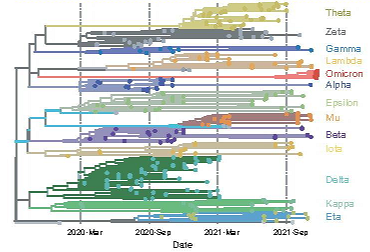A group from Research Institute of Public Health, Nankai University, Tianjin, PR China, etc. has reported on an origin of SARS-CoV-2 omicron variant.
https://pubmed.ncbi.nlm.nih.gov/35005525/
Despite a large number of mutations in Omicron, no evidence was found in known public databases to suggest that these mutations slowly accumulated over time. Additionally, phylogenetic trees showed no intermediate branches of evolution, which is a very surprising result.
If Omicron evolved from a strain of the Delta variant, they would share a common mutation profile. However, analysis of data from GISAID showed that the Omicron variant differed from each of these strains and did not evolve from the Delta variant. The phylogenetic analysis strongly indicates that the Omicron variant forms a monophyletic group with the Gamma variant as a sister group, and the Omicron group has an extremely long branch length.
The time-scaled phylogenetic tree shows that the Omicron and Gamma lineages likely diverged in the first half of 2020. This supports the hypothesis that Omicron may have evolved in a non-human animal species. After accumulating many mutations in the animal host, the altered coronavirus was transmitted back to humans by reverse zoonosis.
Determining the origin of Omicron requires surveillance of animals, especially rodents, because they may have come into contact with humans carrying a strain of the virus with adaptive mutations.

